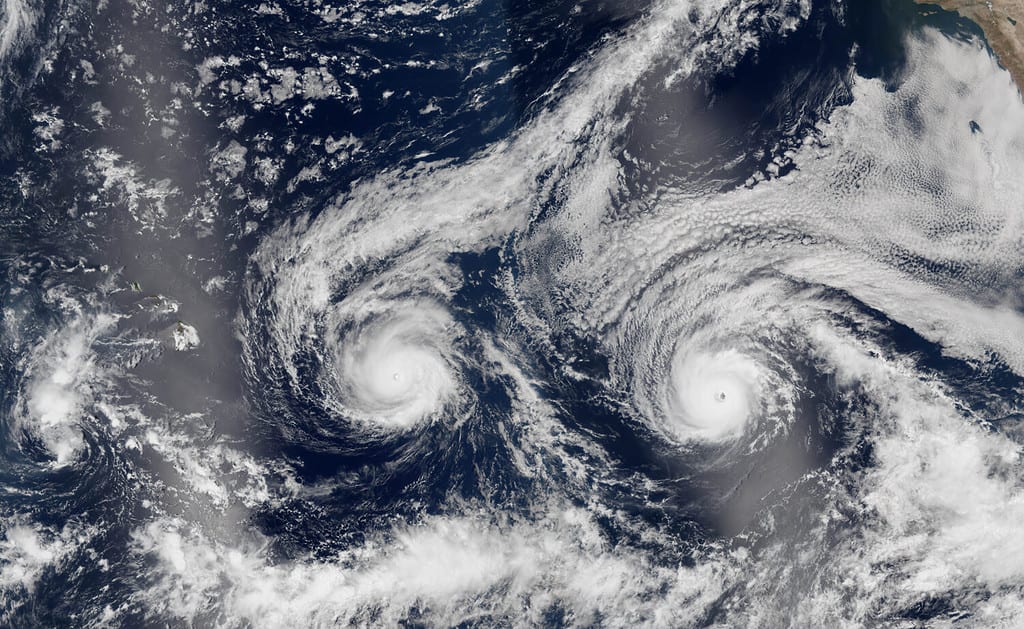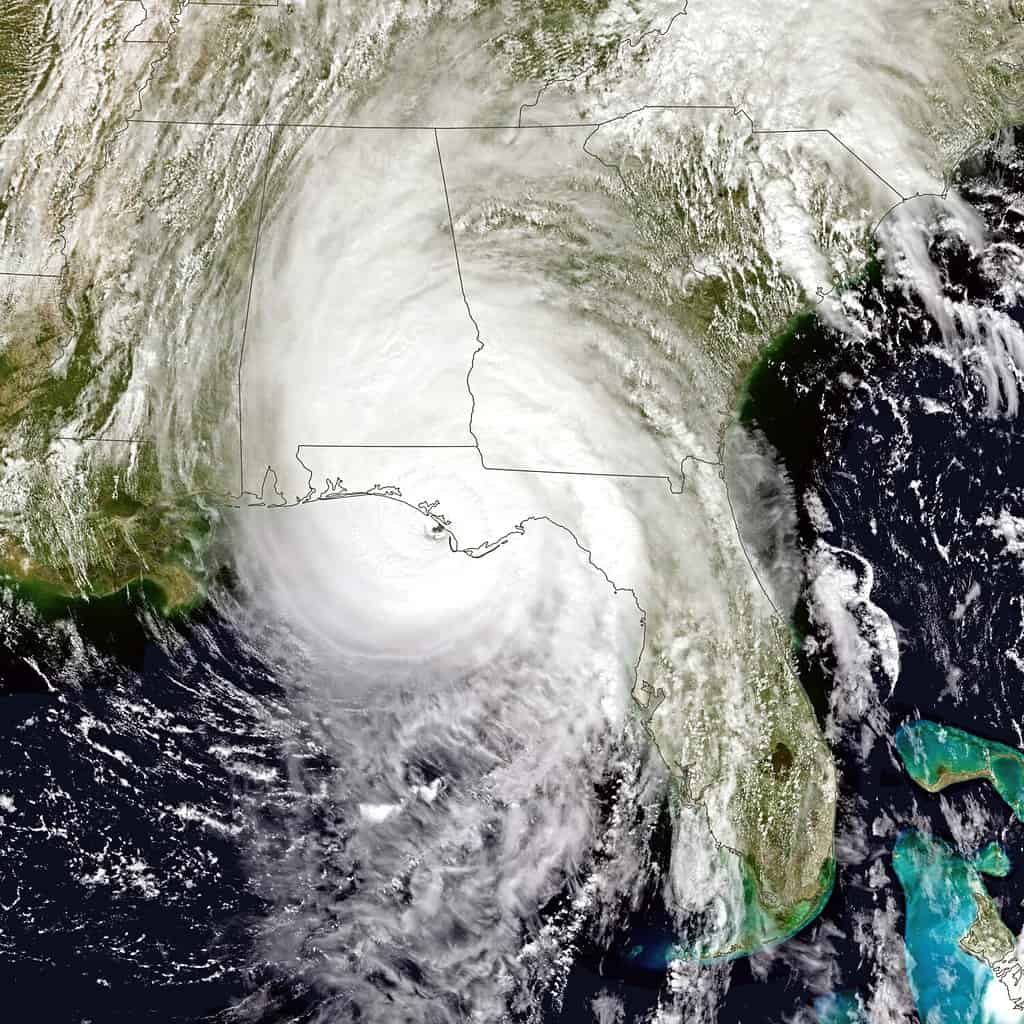Sat directly on the eastern coast of the United States, adjacent to the Atlantic Ocean, North Carolina is a hot spot for hurricanes. While it doesn’t receive as many storms as some other states, namely Florida, several hurricanes occur each year. Keep reading below to learn when hurricane season is in North Carolina, as well as some of the latest occurring hurricanes to ever hit the Tar Heel State.
What Is a Hurricane?
The term “hurricane” is another word used to describe typhoons or tropical cyclones. Typically, this word comes into play once a storm system situated in the Northern Atlantic and Northern Pacific regions reaches speeds of 74 miles per hour or greater. Prior to this, they are known as tropical storms (those between 39 and 73 miles per hour) or tropical depressions (those under 39 miles per hour). Hurricanes form away from shore, most often developing over tropical or subtropical waters.
On a global level, hurricane season begins on June 1 and will end on November 30. During this time, an average of 12 storms tend to appear, though the exact number varies each year. While this is true for the world, however, what does hurricane season look like in North Carolina?

A hurricane is a dangerous storm categorized by high-speed winds, heavy rainfall, and potential flooding.
©Everett Collection/Shutterstock.com
When Does Hurricane Season End in North Carolina?
As it turns out, North Carolina actually follows suit, with June 1 to November 30 making up hurricane season. However, while this is the official timeline for these devastating storms, the Tar Heel State has a peak season when hurricanes are most common. This occurs in August, September, and October, with September receiving the most hurricanes.
It’s important to note that many hurricanes that hit North Carolina directly aren’t true hurricanes. Instead, because of its position further north on the coast, by the time many hurricanes reach North Carolina, they have dropped below speeds of 74 miles per hour. However, for many of the hurricanes in which this is true, they can still create lasting effects on the state, even while they are situated further south, such as in Florida. s
Ready to learn more? Here are some of the latest occurring hurricanes and tropical storms to impact North Carolina.

Since recorded meteorological history, North Carolina has experienced over 400 hurricanes, though only 12 major hurricanes hit directly.
©Simeonn/Shutterstock.com
Three of the Latest (Named) Hurricanes to Affect North Carolina
Not every storm and hurricane to hit North Carolina has a name. This is especially true for those to occur in the early 20th century and before. Below, you’ll be able to learn more about three named hurricanes that hold the title for being some of the latest occurring hurricanes to have an impact on North Carolina.

While most hurricanes in North Carolina occur between August and October, some have occurred as late in the year as December!
©NASA images/Shutterstock.com
1. Hurricane Eta: November 13, 2020
When Hurricane Eta first struck Central America, it was as a Category 4 storm. Eta appeared at the end of a rather busy storm season for the Atlantic Ocean, one that included 27 other storms before Eta.
Eta began as a tropical wave in the eastern Caribbean Sea on October 31. A tropical wave is an area of low pressure that often evolves into larger storms. The storm lingered around Florida and the Gulf of Mexico for several days, its outer rings sending rain to North Carolina. As it approached the Tar Heel State, the hurricane became an extratropical storm and interacted with a cold front, resulting in vast amounts of rain and flash flooding.
Although Eta had lost hurricane status by the time it directly hit North Carolina, the long-distance effects of it as a hurricane, as well as its local effects as an extratropical storm, resulted in 9 deaths.
2. Hurricane Ida: November 12, 2009
Hurricane Ida was the strongest tropical cyclone to make landfall in the 2009 Atlantic hurricane season. The hurricane formed on November 7 and struck Nicaragua only a day later, with wind speeds up to 80 miles per hour. Although it later became a nor’easter, while a hurricane, Ida caused catastrophic damage to Central America and the American east coast. This includes hurricanes and heavy rainfall.
3. Hurricane Noel: November 3, 2007
Hurricane Noel was a dangerous storm that traveled all the way from the Caribbean Sea to Newfoundland. It formed on October 28th and became an extratropical storm on November 2nd, just a day before it crossed state lines into North Carolina. As a result, North Carolina felt the effects of Hurricane Noel while it was still such. Both as a hurricane and extratropical storm, Noel caused an estimated 6000 people to go without power as a result of high wind speeds and heavy rainfall.
Latest (Unnamed) Hurricanes to Hit North Carolina
North Carolina has experienced over 400 tropical cyclones, with some on record dating back to pre-1700. As a result, not all hurricanes to have occurred late into the season received notable names. Here is a list of some of the latest dates unnamed hurricanes have hit North Carolina:
- December 2, 1925
- November 25, 1888
- November 11, 1948
- November 2, 1861.
The photo featured at the top of this post is © FotoKina/Shutterstock.com
Thank you for reading! Have some feedback for us? Contact the AZ Animals editorial team.







